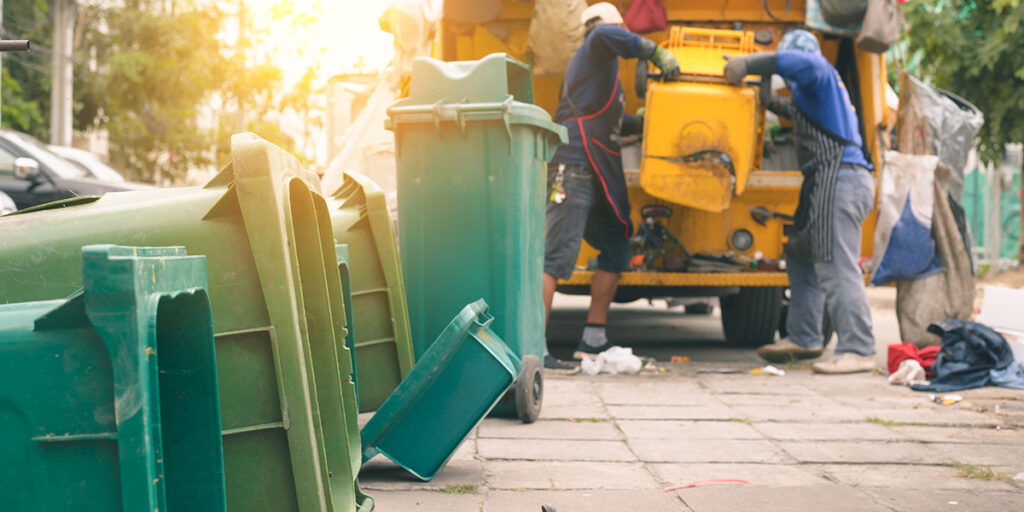Rather than a small way of life option, sustainable garbage disposal techniques have become essential for environmental management. The traditional linear paradigm of “take, create, dispose” is demonstrated to be unviable; so taxing on our planet’s resources and waste disposal capacity drastically. For both corporations and houses, the goal is to get towards a circular economy where supplies are used as long as possible. This calls for a conscious behavioural hierarchy: reducing our consumption first, next repurposing goods, and last ensuring ethical disposal by way of composting and recycling. Choosing the right partner for bigger projects like garden clearances or house renovations is absolutely crucial; selecting a responsible skip hire Walkden business assures that sorting and recycling initiatives turn a significant amount of your garbage away from landfill.
Dropping your recycling abilities
Effective recycling underpins sustainable waste management. First, one has to know the particular rules of the local council since accepted materials may vary. Food waste can contaminate a whole batch of recyclables, rendering them unusable; hence, cleanliness is the response. Before discarding plastic containers, jars, and cans, give them a rinse. Learn the symbols on packaging; bear in mind, nevertheless, that not every numbered plastic is internationally recyclable. Reduce cardboard boxes to create space and avoid ‘wishcycling,’ the well-intended behaviour of throwing non-recyclable materials into the trash that disturbs the sorting process and does more harm than good.
Prioritising waste reduction and repurposing
The best approach to garbage management is to stop output totally. The waste hierarchy’s top priority is reduction and recycling. This involves intentionally changing your consumption habits: buying in bulk using your own containers, choosing durable, reusable items over single-use plastics, and picking sparsely packaged products. Consider the possibilities for a second life of anything before you discard it. Items can be stored in glass jars; old t-shirts become cleaning cloths; furniture can either be restored or reused. Changing one’s attitude to one of “make-do and mend” helps to greatly lower the volume of garbage calling for disposal.
Give away and trade unused items
For others, items you no longer need might be helpful resources. Good condition apparel, furniture, books, and gadgets should not be thrown in a landfill. Instead, give them to thrift stores, arrange a car boot sale, or list them for sale on internet marketplaces. This habit prolongs the life of products, lowers demand for new production, and either backs charitable causes or gives a somewhat extra income. Moreover, it promotes a community-oriented attitude toward consumption. Many humanitarian groups provide collection services for larger goods, hence simplifying the process of donating and guaranteeing your unused items get a fresh home.
Investigating Specialist and Terracycle Programs
For waste streams beyond normal kerbside collections, companies like Terracycle provide a great answer. Normally, difficult-to-recycle materials including crisp packets, toothpaste tubes, coffee pods, and certain beauty product packaging,n,g are meant to be recycled by these speciality programs. Though sometimes needing a bit more work to find a public drop-off site or buy a zero-waste box, they stop complicated materials from becoming landfill. Many companies today support these programmes as part of their corporate citizenship. By engaging in them, one helps to properly process complicated polymers and composites and provides them with a new purpose.
Proper Hazardous Waste Disposal
Some home objects need particular care because they are flammable, corrosive, or poisonous. Paint, batteries, electrical items (WEEE), chemicals, and fluorescent lightbulbs make up this ‘hazardous waste’. As poisons can leak into soil and groundwater, getting rid of these in your regular waste bin poses a risk for collection workers and the environment. The right approach is to bring them to your closest Household Waste Recycling Centre where special equipment for safe handling is available. Here, materials are processed to ensure safe and responsible handling; valuable elements, including precious metals from electrical devices, are recovered.
Leveraging Local Recycling Efforts
Interacting with local community projects can greatly enhance your sustainable garbage management. Many towns have repair cafes where volunteers help restore damaged furniture and equipment, imparting useful knowledge and lowering garbage. Tool libraries let you borrow uncommon items instead of going out to purchase new ones. Local gardening clubs may arrange plant exchanges or community compost centres. Apps for food sharing can introduce you to neighbours so you can reallocate excess food. These projects help to reinforce community connections, foster a culture of sharing, and advance a collective responsibility for the local environment, in addition to offering useful answers for waste reduction.
Conclusion
A complex undertaking, sustainable trash disposal calls for a deliberate change in our everyday habits and a dedication to the waste hierarchy. Including these seven strategies, from careful recycling and composting to proactive reduction and neighbourhood engagement, will help each of us to considerably reduce our environmental impact. This strategy turns waste into a resource, saves natural resources, and lowers pollution. Ultimately, creating a sustainable future depends on our combined efforts to more carefully handle resources, thereby helping to preserve the Earth for future generations.
